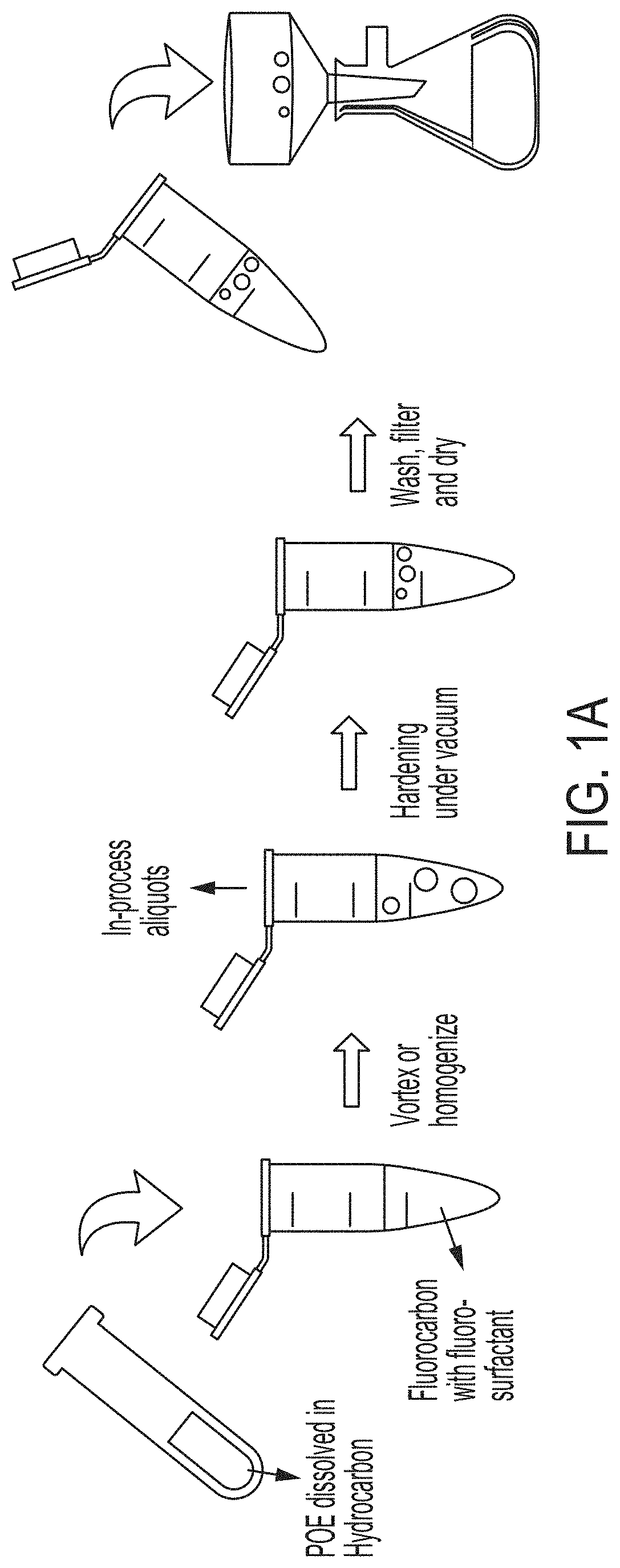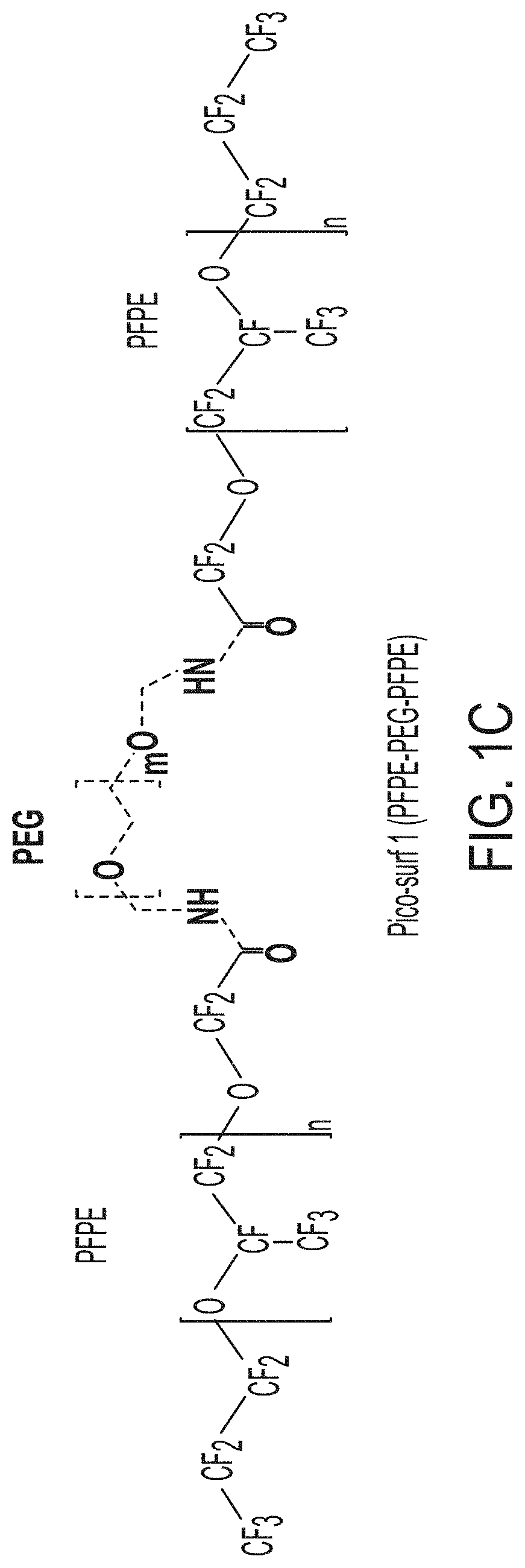Sustained release formulations using non-aqueous membrane emulsification
- Summary
- Abstract
- Description
- Claims
- Application Information
AI Technical Summary
Benefits of technology
Problems solved by technology
Method used
Image
Examples
example 1
rospheres Synthesis Via H / F Based Bulk Emulsion
[0113]Materials and Methods
[0114]Oil and aqueous-based emulsion system are frequently used for polymeric microparticle or nanoparticle synthesis, where hydrophobic polymer materials are dissolved in the organic phase and dispersed in an aqueous continuous phase. However, for water-soluble polymers, e.g. PEG, carboxymethyl cellulose (CMC), and polymers that readily hydrolyze in the presence of water include polyanhydrides, aliphatic polyesters with short mid-blocks like polylactic acid and certain poly (amino acids) like poly (glutamic acid), conventional aqueous-based emulsion systems are not ideal. The following examples demonstrate the utility of the disclosed H / F emulsion system for producing the above mentioned hydrolyzable or water-degradable polymeric microparticles. In some embodiments, those polymers are first dissolved in a hydrocarbon solvent, including polar solvents, e.g. acetonitrile, tetrahydrofuran and less-polar solvents...
example 2
Homogenization Speed
[0120]Materials and Methods
[0121]One (1) mL of 30% or 40% w / v POE in DCM were added to 9 mL of FC-40 with 0.5% (w / w) FS FC-40 and emulsified with a VWR Handheld homogenizer 200 with VWR 7 mm×95 mm saw-tooth generator probe, at one of three homogenizing speed, low (about 50% of full power), Middle (about 60% of full power), and high (about 70% of full power). The formed emulsions were stirred under vacuum. The microspheres formed were washed and dried under vacuum.
[0122]Results
[0123]As illustrated in FIGS. 3A-C, for 30% POE, low homogenizing speed gave larger microsphere sizes while high homogenizing speed gave smaller sizes (Table 2). The 40% POE showed the same trend. These results show that tuning the homogenizing speed could control the microsphere size.
TABLE 2Microsphere sizes of the POE spheres producedwith varying homogenizing speed.MiddleDiameterLow SpeedSpeedHigh SpeedDv(10) (μm)2.82.01.1Dv(50) (μm)16.113.55.4Dv(90) (μm)31.531.612.0
example 3
rocedures of Protein SDP Encapsulation in POE Microspheres Via S / H / F Based Bulk Emulsion Method
[0124]Materials and Methods
[0125]As illustrated in FIG. 4, a bulk emulsion synthesis can be divided into three steps, formulating, emulsification, hardening. The properties of the product will be different as different parameters used in these three steps. The general procedures are described as below:
[0126]For formulating, 10%-30% w / w of total solid weight VEGF Trap SDP (or fluorescent-labeled SDP (F-SDP) for fluorescence imaging) were dispersed in 500 μL ethyl acetate containing 10-35% w / v POE by vortexing and subsequent sonication for 5 min. Then these suspensions were added into 9.5 mL FC-40 with 0.1-0.5% w / w FS. Emulsification can be achieved through agitation, vortexing or homogenizing using a bench-top homogenizer. The structures of the emulsions are illustrated in FIG. 5. Immediately after emulsification, in-process aliquots were taken and dropped on glass slides for microscope ima...
PUM
| Property | Measurement | Unit |
|---|---|---|
| Fraction | aaaaa | aaaaa |
| Diameter | aaaaa | aaaaa |
| Ratio | aaaaa | aaaaa |
Abstract
Description
Claims
Application Information
 Login to View More
Login to View More - R&D
- Intellectual Property
- Life Sciences
- Materials
- Tech Scout
- Unparalleled Data Quality
- Higher Quality Content
- 60% Fewer Hallucinations
Browse by: Latest US Patents, China's latest patents, Technical Efficacy Thesaurus, Application Domain, Technology Topic, Popular Technical Reports.
© 2025 PatSnap. All rights reserved.Legal|Privacy policy|Modern Slavery Act Transparency Statement|Sitemap|About US| Contact US: help@patsnap.com



